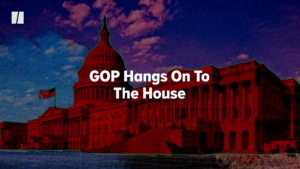Volatility to return ahead of Trump’s inauguration day: Barclays


Investing.com — In the weeks leading up to Donald Trump’s inauguration, Barclays (LON:) analysts foresee increased market volatility driven by speculation surrounding the implementation of his economic policies, termed “Trumponomics.”
Following the initial optimism and a strong market reaction to Trump’s electoral victory, investors have shifted their focus to the uncertainties tied to the new administration’s cabinet appointments and policy priorities.
Barclays flags that while U.S. equity markets and bond yields initially rallied, reflecting investor optimism about Trump’s promises of tax reforms and infrastructure spending, recent weeks have seen these “Trump trades” lose momentum.
This shift suggests caution among market participants, with many investors already booking profits from earlier gains.
Sentiment indicators, such as the American Association of Individual Investors Bull-Bear Index, reflect this growing caution, as bullishness retreats to more moderate levels.
Adding to this volatility are geopolitical concerns, particularly escalating tensions in Ukraine. Barclays notes that speculation is rife about Trump’s potential role in brokering negotiations between Russia and Ukraine post-inauguration.
However, the prospect of a ceasefire or reconciliation remains uncertain, with the next two months likely to witness heightened tensions as Russia seeks to leverage the transition period in Washington.
Analysts suggest that any eventual ceasefire and subsequent reconstruction efforts—estimated to require $500 billion—could create long-term opportunities, particularly for sectors such as European steel and cement, but these remain speculative for now.
“Away from the Trump noise, we still see AI investment theme intact,” said analysts at Barclays. The continuing investment in artificial intelligence, buoyed by companies like Nvidia (NASDAQ:), provides a counterpoint to the short-term jitters in traditional equity markets.
Meanwhile, energy prices, including European , have also seen upward pressure, further complicating the global market outlook.





